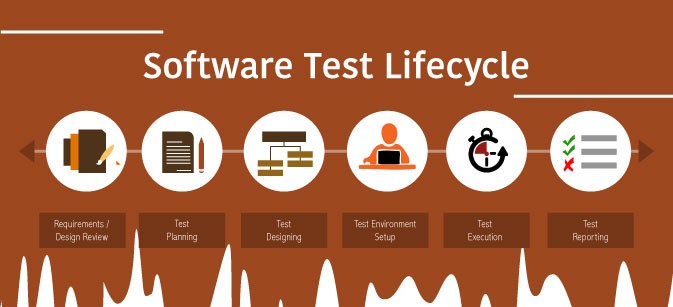What is Software Test Life Cycle?
Software Test Life Cycle is the sequence of test activities that need to be completed to test software. All related test activities are grouped called phases and each phase in a testing life cycle should be completed successfully.

1. System Study-
It involves studying a procedure or business in order to identify its goals and purposes and create systems and procedures that will achieve them in an efficient way. Use cases are a widely used system analysis modelling tool for identifying and expressing the functional requirements of a system.
2. Prepare Test Plan-
Test plan is a document that derives all the future testing activity. This is where we decide-
-> How many engineers are needed, what are the features to be tested and what are the features not be tested.
-> What should be the approach required to test the product.
-> How to install the product & set up the environment.
-> What are the types of testing you should conduct in future.
-> How to track the bugs.
3. Write Test Case-
A test case is a set of conditions or variables under which a tester will determine whether a system under test satisfies requirements and works correctly. The process of developing test cases can also help in finding problems in the requirements or design of an application. Different Activities for writing test cases are-
a. System Study
b. Identify Scenario
c. Document the identified scenario
d. Review test cases
e. Fix the review cases.
f. Verify the fix.
g. Test case approved.

4. Write Traceability Matrix-
Writing test cases, you need to prepare a traceability matrix to make sure that all requirements has at least one test case.
5. Test Execution-
-> Once you are sure that every requirement is having at least one test case. You can start executing the test cases.
-> This is where we conduct all types of testing.
-> This is where testing engineer finds maximum bugs and help developers to improve the quality of product.
6. Defect Tracking-
Defect tracking is the process of tracking the logged defects in a product from beginning to closure (by inspection, testing, or recording feedback from customers) and making new versions of the product that fix the defects.
7. Test Execution Report-
At the end of every test cycle, we should prepare test execution report.
-> test execution report is a document that covers how many test cases are there, how many test cases are executed in this test cycle and how many test cases are pass & how many test cases are failing.
8. Retrospect Meeting-
A retrospective is a meeting that’s held at the end of an iteration in Agile software development (ASD). During the retrospective, the team reflects on what happened in the iteration and identifies actions for improvement going forward.

